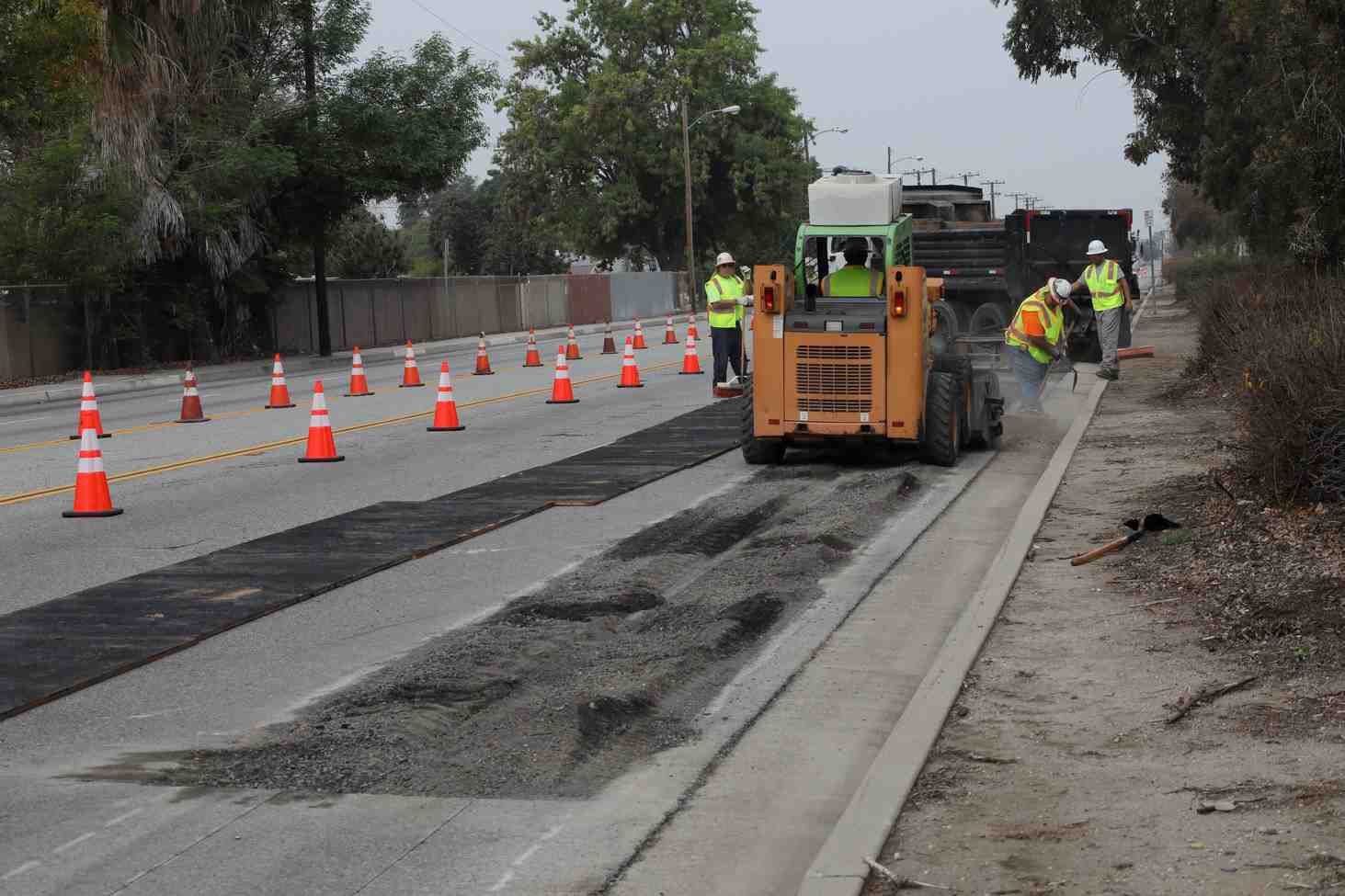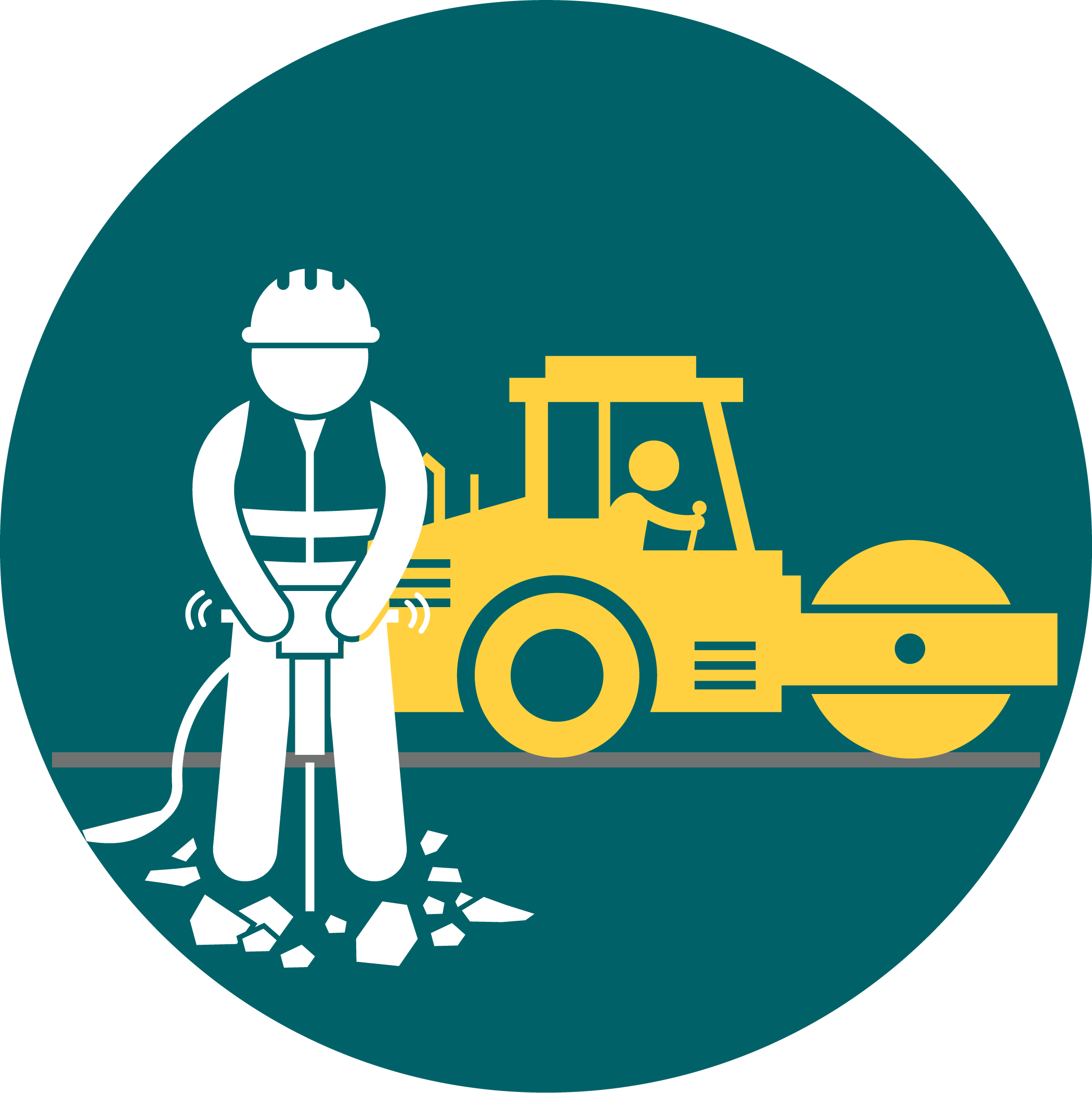Undergrounding Power Lines in Targeted High Fire Risk Areas
As part of ongoing wildfire mitigation efforts, SCE is undergrounding overhead distribution lines in severe risk areas to continue to reduce the threat of wildfires, particularly in communities where the power lines have not been replaced with covered conductor, also known as coated wire.
Underground systems increase reliability during high winds and storms by reducing the exposure of electrical infrastructure to dangerous weather conditions. The risk of ignitions and outages associated with vegetation, debris and metallic balloons that may blow into power lines during a significant weather event is virtually eliminated. Additionally, underground systems prevent other risk drivers that can cause electrical faults that could lead to a wire-down event. Undergrounding is important in severe risk areas, particularly where it is difficult to evacuate quickly during a significant wildfire.
Refer to the maps by county for the scope of work in your community and the fact sheet for additional information about undergrounding power lines to reduce wildfire risk.

Note: For undergrounding projects not related to wildfire mitigation, refer to Rule 20 undergrounding projects, which are initiated by a governmental agency (e.g., city, county), developer, or individual customer.
Undergrounding Work Phases

Planning
During this phase, SCE planners and surveyors will conduct a feasibility assessment to help determine the scope of work that will take place in a selected community. They will gather data and make observations to analyze the feasibility of undergrounding electrical lines, which may include accessing and taking images of equipment and surrounding areas. This analysis is a critical assessment to determine if this type of work can be completed at the proposed location. 1

Permitting
Once the scope of work is established, SCE can determine if permitting is required. Most projects require at least one permit, typically from a city, county or Caltrans, for road closures. Additional permit requirements depend on the project’s location. They may include state and federal land permits, environmental clearances, private property easements, Federal Aviation Administration approvals or railroad rights-of-way permits. Permit approval may take as little as two months, or the process may be significantly longer.

Construction
Work can be scheduled and construction can begin once all the required permits are received. 2 In most cases, this work will require a power outage at the end of construction when power is ready to be switched from the overhead to the undergrounded lines. We will notify customers in advance if an outage is needed.
Frequently Asked Questions
GENERAL
SCE is pursuing undergrounding to help reduce the risk of wildfires and increase reliability during extreme weather conditions. We have identified certain high fire risk areas where it is prudent to move power lines underground for public safety reasons if not already hardened with covered conductor and feasible to do so. SCE may choose to underground power lines in areas that meet certain criteria, including limited exit and entry points to communities, extreme potential consequences and other factors. Learn more about undergrounding as a wildfire mitigation measure with this fact sheet.
While SCE is removing electrical overhead lines and equipment and putting them underground in targeted areas, poles that have lines and assets owned by other companies (e.g., telecommunications, cable, etc.) may remain above ground. SCE will communicate the scope of work with telecommunications companies to allow them the opportunity to underground their lines at the same time.
In situations where an electrical line is not undergrounded, SCE will continue to pursue other mitigations, such as replacing the bare wire with covered conductor. This is one of the most valuable tools in cost-effectively and expeditiously reducing ignition risk, especially when supplemented with inspections and vegetation management. Learn more about SCE’s wildfire mitigation efforts at sce.com/mitigation.
Currently, funding of targeted undergrounding projects for wildfire mitigation purposes is requested as part of SCE’s General Rate Case proceeding and differs from Rule 20 undergrounding projects, which are initiated by a governmental agency (e.g., city, county), developer or individual customer.
Because funding of targeted undergrounding projects is requested as part of SCE’s General Rate Case, the projects will be reviewed and, to the extent approved, included in the total General Rate Case impact on your electric bill.
PLANNING
While an undergrounding project may be taking place in your neighborhood, the scope of work depends on the specific portions of the circuit lines being targeted for undergrounding that may or may not feed your home or neighborhood. The project team carefully evaluates the power lines that meet the targeted undergrounding criteria, including limited exit and entry points to communities, extreme potential consequences and other factors.
SCE is undergrounding power lines to help reduce the risk of wildfires and increase reliability during extreme weather conditions. We have identified certain high fire risk areas where it is prudent to move power lines underground for public safety reasons if not already hardened with covered conductor and feasible to do so. Our goal is safety and not necessarily aesthetics. SCE may choose to underground power lines in areas that meet certain criteria, including limited exit and entry points to communities, extreme potential consequences and other factors. If you’d like to know if your community has been scoped for undergrounding for wildfire mitigation purposes, please refer to our maps by county. Governmental agencies (e.g., city, county), developers or individual customers interested in initiating an undergrounding project not related to wildfire mitigation, please refer to Rule 20 projects.
PERMITTING AND EASEMENTS
The SCE targeted undergrounding website provides maps by county for the scope of work we’re planning in different communities. Different stages of the undergrounding work will require different permits. During the planning phase, SCE will initiate early permit applications with the city, county and CalTrans. We’ll also initiate any government lands and environmental requirements. As we move into the scheduling phase, we’ll perform the standard permitting and easement processes, perform the environmental clearance process and obtain additional agency permits, if required. Undergrounding construction requires disturbance along the entire route, which could require approval from multiple agencies and jurisdictions, as well as more extensive reviews and approval.
If SCE is unable to obtain the appropriate permits, easements or other agency approvals prior to the start of construction, changes may be made to the proposed targeted undergrounding work.
CONSTRUCTION
Undergrounding is a very complex project, and because of that, the timing of the work is subject to change as the work progresses. Work will typically occur from 7 a.m.-7 p.m., Monday through Friday and with occasional work on weekends. The times will be the same for undergrounding work but may require 24-hour work for underground drilling in some locations.
An SCE-authorized crew will have vehicles that feature the company’s logo and contractor vehicles will have signage indicating they are SCE “approved contractors.” Anyone associated with the work will also carry ID badges.
The targeted undergrounding work may require occasional access to individual property, but notification will be made ahead of time to property owners. We understand the stress that traffic can have on all of our lives and SCE will work very closely with the city on public outreach around the traffic impacts so we can make sure folks plan their commute and daily errands around the closures. We can’t eliminate the impact of lane closures, but we can minimize inconveniences by spreading the word.
While dust during the undergrounding construction work cannot be completely eliminated, you may also see a water truck periodically spraying water at the work site during operation of construction equipment and vehicles to help reduce fugitive dust. This is being performed in accordance with the project’s dust control guidelines. Here are a few simple tips that may help you reduce construction disturbance: close windows and doors facing the construction area to reduce noise and dust, and watch for project updates to ensure you have the most up-to-date information about the work taking place in your area.
Once undergrounding construction work has been completed, SCE will perform post-construction cleanup and restoration activities in project work areas.
Customers may experience outages associated with targeted undergrounding work and we recognize that temporary outages can be inconvenient and appreciate your patience. In these cases, we will notify you by phone, text, email or mail at least 72 hours before the outages you so you can take any necessary precautions. Please be aware, however, that timing can change for safety reasons. It’s possible that an outage can be rescheduled, canceled, or end earlier than planned. Your notification will include a Scheduled Outage Number that you may enter into our Outage Map to receive the latest updates.
CLAIMS
If you believe SCE is responsible for damage to your property incurred during the undergrounding work, you may submit a claim. SCE Claims department will evaluate claims on a case-by-case basis. You can find more information about filing a claim by visiting sce.com/claims.
If you have specific questions not answered on the website, you can leave a voicemail for the project team on its dedicated phone voicemail box at 1-888-331-0010.
1 An assessment is only to determine the feasibility of undergrounding power lines in the areas identified. It is not a guarantee that SCE will perform this work in your community.
2 Work may be rescheduled or delayed for various reasons, including the need for crews to focus on emergency repairs, outage restrictions during heat storms and the discovery of endangered species or historical artifacts on-site.

